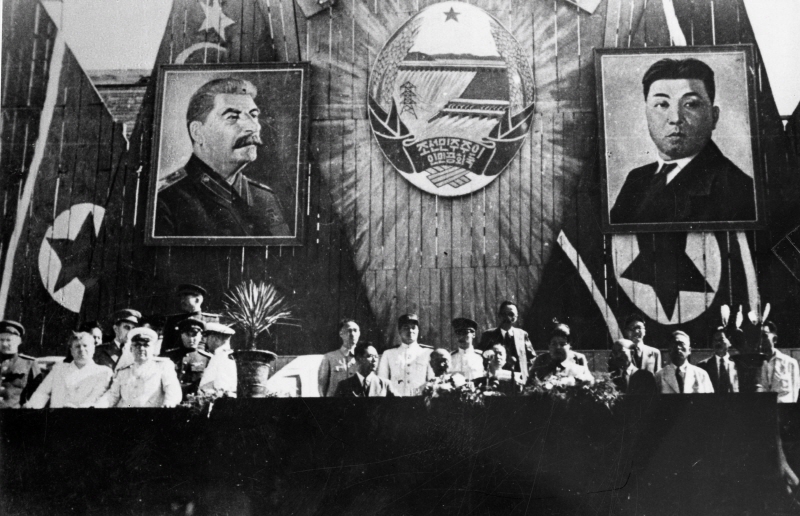[The truth behind the myth of Kim Il-sung]
Part 1: The birth of a young marxist
North Korea’s founder Kim Il-sung was born on April 15, 1912, in Mangyongdae, Pyongyang. His birth name was Kim Sung-ju, but during his anti-Japanese resistance activities, he adopted the alias Kim Il-sung, which eventually became his official name.
His family, originally from Jeonju, moved north due to economic hardships, as they had been tenant farmers for generations. It was his great-grandfather, Kim Eung-woo, who first settled in Mangyongdae.
Kim Il-sung’s father, Kim Hyong-jik, dropped out of Soongsil School in Pyongyang and managed a farm while running a small herbal medicine shop. His mother, Kang Ban-sok, had a name that means “rock” in Christianity, symbolizing God or Christ.

His maternal grandfather, Kang Don-uk, was an elder at Chilgol Church and was related to Rev. Kang Yang-uk, a prominent figure in North Korea’s government and Christian community.
Attending church as a child in Pyongyang
Kim Il-sung often attended church, and his family was close to Rev. Son Jung-do, the father of Admiral Son Won-il. Kim Il-sung nostalgically recalled his childhood memories of sharing candies with Rev. Son’s daughter, Son In-sil.
Interestingly, many communist leaders, including Kim Il-sung, were Christians in their youth. Later, he utilized many lessons and ideas he learned in Sunday school to spread his ideology and lead his organization.
At the age of 14, Kim Il-sung reportedly read “The Communist Manifesto” and “Capital (Das Kapital),” though historian Robert A. Scalapino expressed skepticism, noting the absence of a Korean translation of Das Kapital at that time. It remains unclear which version—English, Japanese, Chinese, or Russian—he might have read. If true, it would suggest he was an exceptionally gifted individual when considering his age.
At 14, Kim Il-sung organized a secret anti-imperialist society, the Down-with-Imperialism Union, and became its leader. Wada Haruki of Tokyo University questioned the feasibility of a 14-year-old founding such an organization.
Kim Il-sung’s father, Kim Hyong-jik, died young at the age of 32.
Anti-Japanese guerrilla activities in his youth
At the age of 17, in 1929, Kim Il-sung, then a student at Jilin Middle School, was arrested by Chinese authorities for his involvement in the Korean Revolutionary Army. At that time, he was working under Lee Jong-rak, but was released in early May 1930.
North Korean historians deny his subordinate role, claiming that he operated independently. Kim Il-sung joined the Chinese Communist Party in 1931, though North Korea’s official records later downplayed this connection to present him as a “pure Korean hero.”

Kim Il-sung gained prominence as an anti-Japanese guerrilla leader through the famous Battle of Pochonbo. On June 3, 1937, he led around 100 partisans armed with four machine guns across the Yalu River, attacking the Pochonbo police station and setting fire to the post office and fire station on the night of June 4.
Despite a counterattack by 36 policemen led by Japanese Inspector Ogawa and the Hyesanjin garrison, the Japanese forces suffered seven casualties, including four Japanese, one Korean, and two others, with seven additional wounded.
At the time, many leaders of the anti-Japanese resistance movement were using the name Kim Il-sung, creating a “Robin Hood effect” among the public. However, Scalapino pointed out that the Pochonbo Incident was nothing more than “reckless adventurism.”
Fear of heights and aversion to flying
During this period, Kim Il-sung primarily operated at night, often hiding during the day in dugouts. Psychiatrist Baek Sang-chang testified that these conditions contributed to Kim Il-sung developing nocturnal habits, a preference for underground spaces, and photophobia, as well as acrophobia and a fear of flying, similar to Stalin’s own phobias.

According to testimony from witnesses, Kim Il-sung would often summon people for meetings in the middle of the night, and his room was kept dark with heavy curtains.
After the founding of North Korea, Kim Il-sung only flew three times: once at Stalin’s invitation, another time at Gorbachev’s invitation to visit Moscow on a private plane, and once more to Indonesia at the invitation of Sukarno.
It is noteworthy that these three dictators—Hitler, Stalin, and Kim Il-sung—shared some peculiar traits. All were known for their good looks, good voices, and exceptional oratory skills, had attended church and sung in choirs as children, and two of them suffered from acrophobia and photophobia.
(To be continued.)
BY BOKRYONG SHIN, YOUNGNAM KIM [kim.youngnam@koreadaily.com]
Shin is a former emeritus professor of history at Konkuk University.




